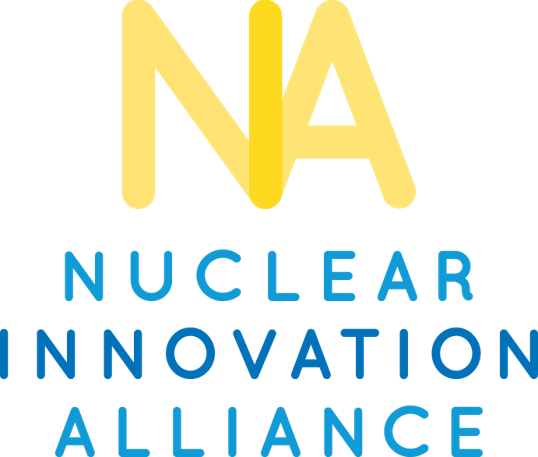
NIA Senior Fellow Jessica Lovering recently attended the Europe Nuclear Energy & SMR Conference in Prague. She shared her insights and impressions in the following dispatch.
ENES 2025 brought together policymakers, developers, and financiers from across Europe to discuss the accelerating pace of nuclear development as well as common challenges. Most participants were from the Czech Republic, Poland, and Romania, with additional speakers from the U.S., Bulgaria, the U.K., Sweden, Denmark, and Finland.
Across the two-day conference, one interesting insight emerged: every country is basically building a first-of-a-kind nuclear project. Whether it is a country’s very first commercial nuclear power plant or just their first to come online in thirty years, most European countries are facing the same challenges related to starting – or restarting- an entire industry from scratch. Even for a country with significant nuclear experience like Sweden, the move toward advanced nuclear reactors and SMRs represents such a paradigm shift that the need for new policies, regulations, and business models left plenty to discuss.
Financing Nuclear Energy: Reducing Risk, Attracting Investors
A central theme across sessions was the need for government policies that reduce risk for investors and create the enabling conditions for capital to flow into new nuclear projects. Financing challenges remain a major obstacle, even in countries with well-established commercial nuclear industries. For example, just one kind of uncertainty for project developers is currency risk—a factor that can arise when suppliers are contracted in local currency, but replacement parts must be sourced in USD at unpredictable rates.
Several presentations also hinted at a careful balancing act between prioritizing a local supply chain versus optimizing for cost-effective suppliers. For example, in Poland, regulations require that at least 40% of project value come from local companies. While such local content requirements could increase investor risk, speakers emphasized that the policy is applied flexibly, allowing developers to maintain project viability while supporting domestic industry. These types of local content or local hiring guarantees can be critical in sustaining public and political support for a project long-term, but there’s a chance they could increase the costs as well if implemented too stringently.
Almost every country highlighted the importance of securing offtake agreements—long-term power purchase contracts that provide predictable revenue streams—as key tools to attract private and institutional investment for first-of-a-kind projects. More importantly, reactor vendors were focused on securing orders for subsequent units beyond their first demonstrations. One speaker from the U.K. had a great aphorism in their presentation: “A single project is the most expensive one you will ever build.” This is a challenge that the nuclear industry is still struggling to overcome.
Keeping Options Open
While participants agree they must ultimately settle on standardized reactor designs and modular production, at this point the national presentations described a diversity of reactor designs under consideration, even within a single country. Their agreements spanned both large reactors and SMR technologies, incumbent light-water companies and advanced start-ups. This “many shots on goal” strategy suggests that governments and utilities are prioritizing flexibility and optionality at this early stage rather than committing to a single technology or vendor.
Energy Prices and the Case for Dense Power
While natural gas prices– or methane as they say in Europe – have come down considerably since the shock of 2022, the enduring political salience of high electricity prices remains a driving factor for renewed interest in nuclear power across Europe. However, in Northern Europe in particular, the conversation has become a little more sophisticated. Several speakers distinguished between generation costs and grid costs, noting that even as natural gas prices have fallen, transmission and grid expansion costs have continued to rise in renewables-heavy systems.
As a result, there is increasing policy attention on the benefits of energy sources like nuclear that can be located near industrial and population centers, potentially limiting the need for costly new transmission infrastructure and upgrades.
Concerns over high energy prices, energy security, and emissions have also led some traditionally anti-nuclear countries to reevaluate their positions. For example, Denmark has banned nuclear energy for 40 years, but there is now growing investor interest in advanced nuclear and a thriving R&D sector. Two Danish nuclear vendors were represented at ENES: Copenhagen Atomics and Saltfoss (formerly Seaborg Technologies). And even in Norway, with ample supplies of hydroelectric power, there is growing interest in nuclear power to meet expected demand for electricity in the future from EVs, data centers, etc.
Conclusion
ENES 2025 underscored that Europe’s nuclear energy revival is not a uniform movement, but a network of national efforts converging around shared challenges: managing risk, building supply chains, and aligning policies to enable private investment. Across Eastern and Northern Europe alike, there is a growing recognition that successful deployment will depend as much on institutional learning and investor confidence as on reactor design.
If this conference is any indication, Europe’s nuclear energy future will be built not through a single technology or country, but through a collective effort to turn first projects into sustainable programs with long order books and enduring public support.